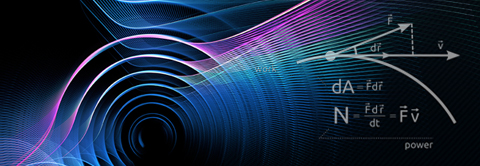“Berry phase and nonlinear response: photocurrent in noncentrosymmetric insulators and Weyl semimetals”
2017.08.31 11:52
| 날짜 | 2017-08-31 14:00 |
|---|---|
| 일시 | AUG. 31 (Thu.), 2 PM |
| 장소 | #5318(E6-2. 5th fl.) |
| 연사 | Prof. Hiroaki Ishizuka (The University of Tokyo) |
“Berry phase and nonlinear response: photocurrent in noncentrosymmetric insulators and Weyl semimetals”
Prof. Hiroaki Ishizuka (The University of Tokyo)
AUG. 31 (Thu.), 2 PM / #5318(E6-2. 5th fl.)
Berry phase is one of the important keywords to understand non-trivial quantum effects. In condensed matter physics, the Berry phase often shows up in transport phenomena (e.g., quantum and anomalous Hall effects) and is considered as a keyword to understand topological properties of non-interacting fermion systems. While most of such studies have focused on the equilibrium states or linear responses in close to the equilibrium, a recent study on the photogalvanic effects have pointed out the relation between the Berry phase and photogalvanic effects in noncentrosymmetric insulators where inter-band transitions take an essential role [1-3]; it is named shift current as it is related to the shift of the Wannier function. So far, however, no observable consequences that distinguish this phenomenon from the conventional mechanism is known. In this talk, we theoretically explored the basic properties of shift current focusing on the distinction between the conventional and shift current mechanisms.
To theoretically study the photocurrent, we employed a Keldysh Green’s function formalism combined with Floquet theory. Using a large size numerical calculation, we study how the photocurrent changes by the local excitation, i.e., when only a part of the system is irradiated by the light. We show that, for the shift current, the magnitude of the current does not depend on the position of the light [4]. This is in contrast to the conventional mechanism, where the photocurrent is expected to be larger at the edge of the sample while it is suppressed when the light is at the center. Such behavior is consistent with the photocurrent recently observed in a noncentrosymmetric organic solid [5].
In the latter half of the talk, we discuss the effect of Berry phase on the photocurrent in Weyl semimetals [6,7]. We show that the Berry phase associated with the Weyl nodes induce a similar phenomenon to the adiabatic pump, resulting in a dissipation-less photocurrent. We find that the photocurrent appears only with the circularly polarized lights. This mechanism may potentially explain the photocurrent observed in TaAs [8].
[1] W. Kraut and R. von Blatz, Phys. Rev. B 19, 1548 (1979); ibid. 23, 5590 (1981).
[2] J. E. Sipe and A. I. Shkrebtii, Phys. Rev. B 61, 5337 (2000).
[3] T. Morimoto and N. Nagaosa, Science Adv. 2, e1501524 (2016).
[4] H. Ishizuka and N. Nagaosa, New J. Phys. 19, 033015 (2017).
[5] M. Nakamura, et al., Nature Commun. 8, 281 (2017).
[6] H. Ishizuka et al., Phys. Rev. Lett. 117, 216601 (2016).
[7] H. Ishizuka et al., Phys. Rev. B 95, 245211 (2017).
[8] Q. Ma et al., preprint (arXiv: 1705.00690).
Contact: Eun Gook Moon, Physics Dept., (egmoon@kaist.ac.kr)







